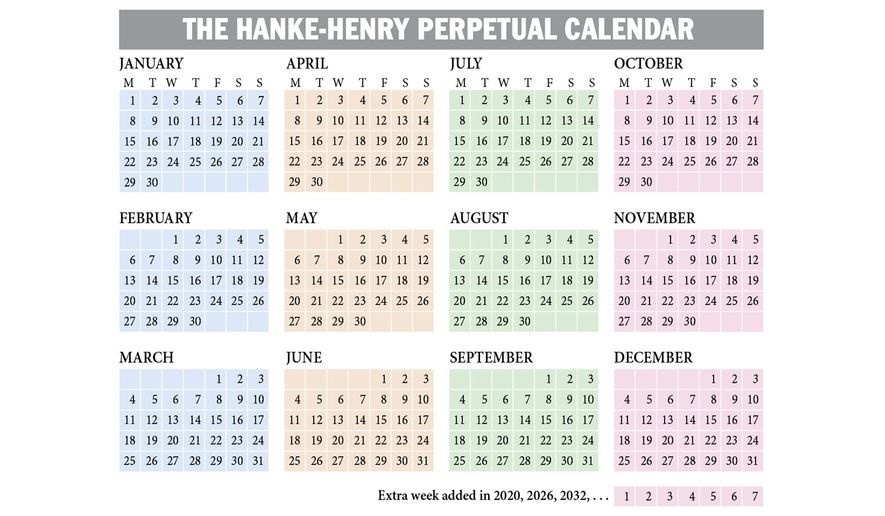
Washington Times December 31, 2019
For more than 500 years, the most popular and influential book after
the Bible was “The Golden Legend” by Jacobus de Varagine. At the end of
the 13th century, Varagine was grappling with how medieval Christians
perceived time: He mapped the liturgical calendar and the stories of
feast-day saints associated with it. The book was a bestseller.
Flash forward to today. We now waste a great
deal of time fumbling around with the flawed Gregorian calendar. For one
thing, new calendars have to be printed ever year. What a waste of both
time and money.
But this isn’t the only cost dished up by our
Gregorian calendar. Indeed, there are a number of problems and
inefficiencies associated with it. Under the Gregorian calendar, the
scheduling of the days for holidays, sporting events and school
schedules — to name but a few — must be redone each year. What a waste
of time and money.
The Gregorian calendar also causes confusion when it comes to the
age-old idea of “time is money.” For example, to determine how much
interest accrues for a wide variety of instruments — bonds, mortgages,
swaps, forward rate agreements, etc. — day counts are required. The
current calendar contains complexities and anomalies that create
day-count problems.
And there are other financial problems
generated by the Gregorian calendar. For example, back in 2013, Apple
was caught up in a quarterly reporting fiasco. Following its
firt-quarter 2013 earnings announcement, Apple suffered its worst
one-day loss in four years as a result of the company’s failure to meet
Wall Street’s expectations. This was largely due to a simple
calendar-generated error — most analysts failed to account for the fact
that Apple’s Q1 2013 was one week shorter than the same quarter the year
before.
The past 400 years have only seen a handful of cohesive efforts to
standardize the modern calendar or iron out the kinks of the Gregorian
calendar. The crusade for calendar modernization found one of its most
prominent champions in 19th-century industrialist George Eastman, the
founder of the Eastman Kodak Co. Driven by a desire to create a more
business-friendly calendar, he developed the “Eastman plan.” It was one
of the first cogent models of a fixed (or permanent) calendar and was
designed to eliminate the practical and financial inefficiencies
generated by the Gregorian calendar system.
However innovative, the Eastman plan was in
many respects crude, failing most crucially to account for and preserve
the Sabbath. Like many past attempts at calendar reform, the Eastman
plan was doomed by its failure to address religious and cultural
concerns. Indeed, one of the major criticisms of such calendar reforms
is that they interfered with religious days of rest, which play an
integral role in the organization of economic activity, i.e. “the work
week.”
No comments:
Post a Comment